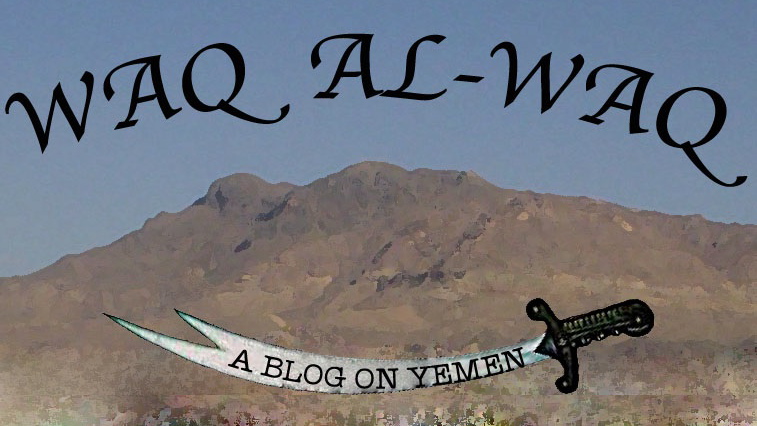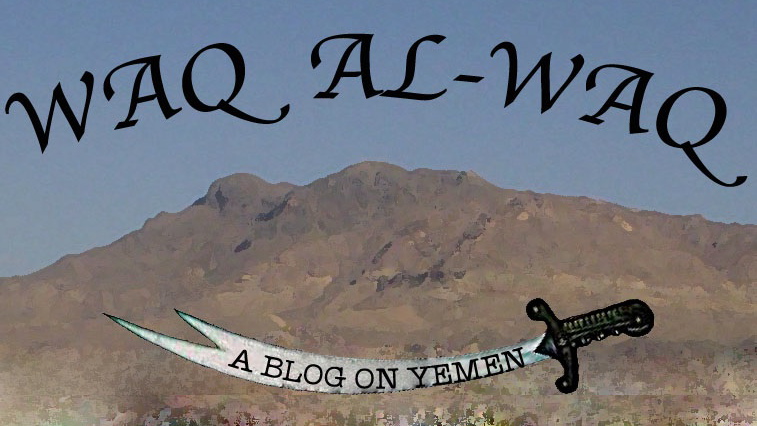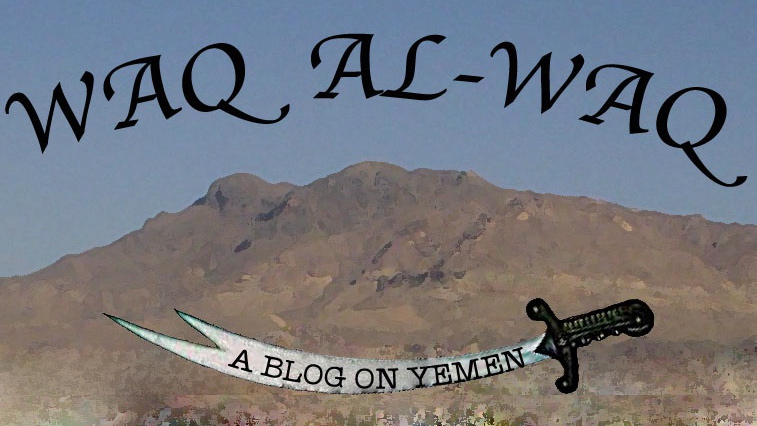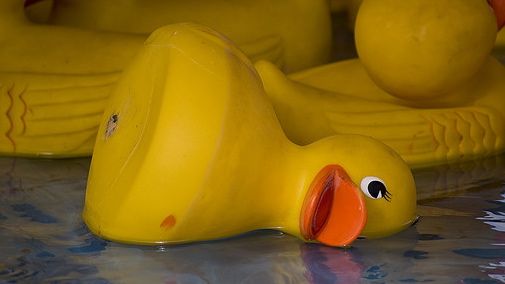AQAP: Propaganda and Recruiting in Yemen
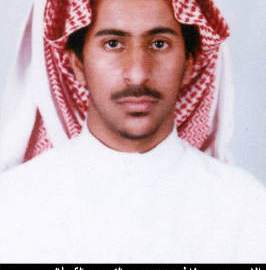
Tis the season for lists, and Attorney General Eric Holder has one and Anwar al-Awlaki is on it.
Speaking to ABC television, Holder said that al-Awlaki was on the same list as Osama bin Laden when it comes to individuals that keep him up at night. I have had my say about Anwar al-Awlaki in the past few weeks arguing in the New York Times and on Waq al-waq, and I have nothing to add to my earlier statements.
In my opinion while al-Awlaki is a threat, removing him will do little to keep the US safer.
After all, at this point last year, al-Qaeda in the Arabian Peninsula (AQAP) had yet to mention his name publicly. Still propaganda is an important part of AQAP’s recruiting appeal and yesterday we got a peek behind the curtain so to speak.
On internet jihadi forums – where these things are typically posted – AQAP’s media wing released the 4th of what it calls “martyrs’ biographies.”
This one focused on a 24-year-old Saudi member of AQAP named Nayif Muhammad al-Qahtani.
(Incidentally, the author of biography, who describes al-Qahtani as a close friend, says he met the young Saudi in early 2007 in the far north governorate of Sa‘dah. This would suggest, contrary to what many people have thought, that AQAP does or at least did have some presence in Sa‘dah.)
The reason he is important for us, is that he was the brains behind al-Qaeda’s flagship journal Sada al-Malahim, The Echo of Battles, which was first released in January 2008 and then published every two months until November 2009 and its 11th issue.
There were two subsequent issues, and it was in one of these, issue 12, that al-Awlaki’s name was first mentioned. That journal eventually evolved into a full-fledged media wing, which put out audio tapes, videos, and now, under what I believe to be the editorial guidance of Samir Khan, it is releasing Inspire, AQAP’s English language magazine.
I mention all of this because I think al-Qahtani’s experience with Sada al-Malahim sheds some light on what is happening now with Inspire magazine, and also because it raises a number of interesting questions.
In addition to all the usual stuff – poetry and loads of Arabic adjectives describing just how good of a man he was – the biography states that al-Qahtani took part in the July 2, 2007 suicide attack in Marib, which killed 8 Spanish tourists and two Yemeni drivers. Shortly after that he met with head of al-Qaeda in Yemen, Nasir al-Wihayshi – who was Osama bin Laden’s personal aide and secretary for several years until the Battle of Tora Bora.
It was in that meeting that the idea for Sada al-Malahim was born. Al-Wihayshi, who much like bin Laden requires an oath of allegiance from members of AQAP, gave his permission to al-Qahtani to form the journal, which was first released six months later.
This, of course, begs the question as to why Sada al-Malahim – AQAP’s flagship journal for so long – has not survived al-Qahtani’s death? Is there no one talented enough to take over? Is it not important enough to AQAP to make a priority?
I think basically what happened is that al-Qahtani along with a couple of friends wrote and edited the journal, and even though al-Wihayshi contributed a bi-monthly editorial piece the whole show was basically al-Qahtani’s.
Now, given the other media that AQAP puts out – including al-Qahtani’s bio, which was written by a friend of his, who claims to have helped al-Qahtani with his media output – I think AQAP has enough media-savvy individuals to produce Sada al-Malahim if it wanted to. But it doesn’t.
Now the organization did lose a media hub last December in a raid, but from the number of attacks they have carried out over the summer, the group has rebounded quite well. Also, its other media productions haven’t been similarly de-railed. So, this leaves us with the conclusion that Sada al-Malahim is not, at the moment, a top priority for AQAP. Why is this?
Was it just not reaching enough people, where it mattered most in Yemen and Saudi Arabia?
Given that it was distributed solely over the internet and didn’t seem to have much penetration among AQAP’s target-populations: rural tribesmen and urban youth – this seems to make sense.
But this could also tell us a bit about Inspire and the work of Samir Khan. If we use al-Qahtani as a model, and I think we should, then it would seem as though AQAP’s head gave his permission to Samir Khan to start up an English-language journal in the hopes of recruiting and/or radicalizing Muslims in the west, who might go on to carry out attacks.
But this means that al-Wihayshi and other top members of AQAP’s leadership don’t necessarily have editorial control over Inspire, which may suggest that while the magazine is a guide to AQAP’s thinking – it is not a decoder ring.
The question I come to at the end of this long post is: Given that we know AQAP is actively recruiting and since they are no longer using Sada al-Malahim, what are they doing on the ground that we don’t know about?
Inspire is targeted to English-speaking, western Muslims.
But based on the number of attacks AQAP has been able to carry out in Yemen this year, the organization is recruiting hand-over-fist.
How are they doing it?

